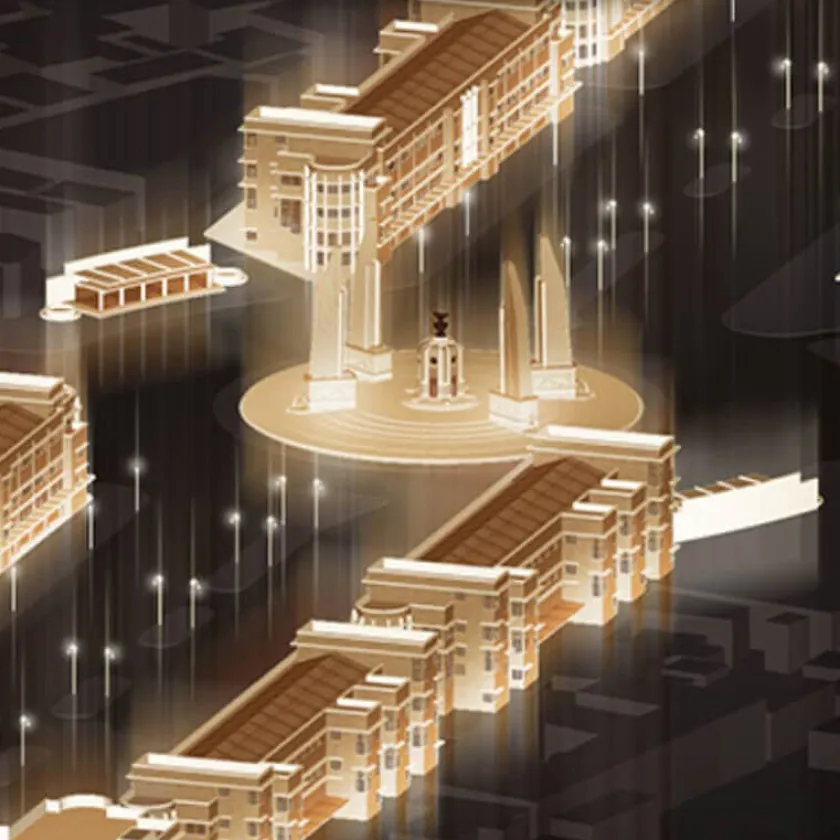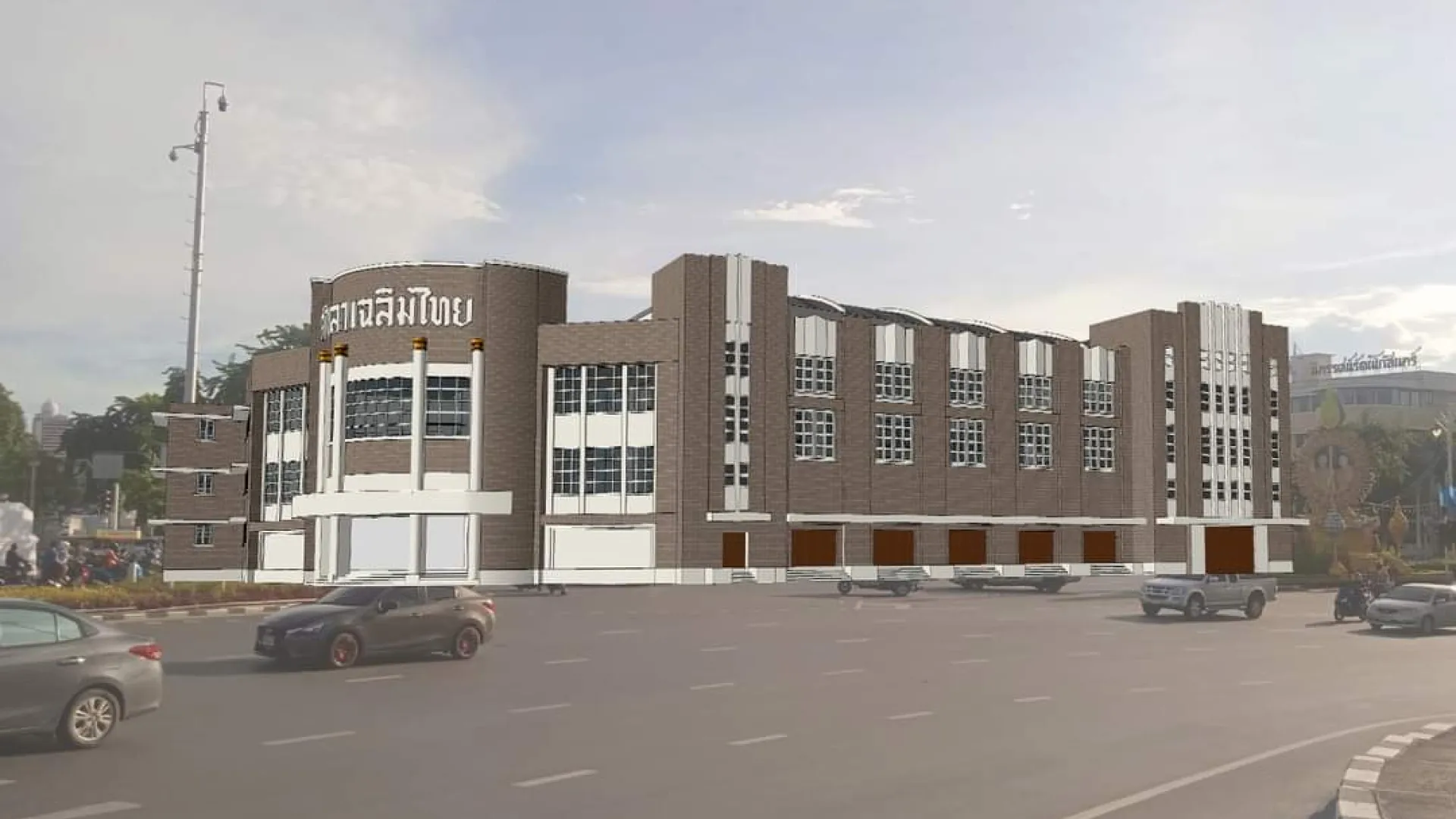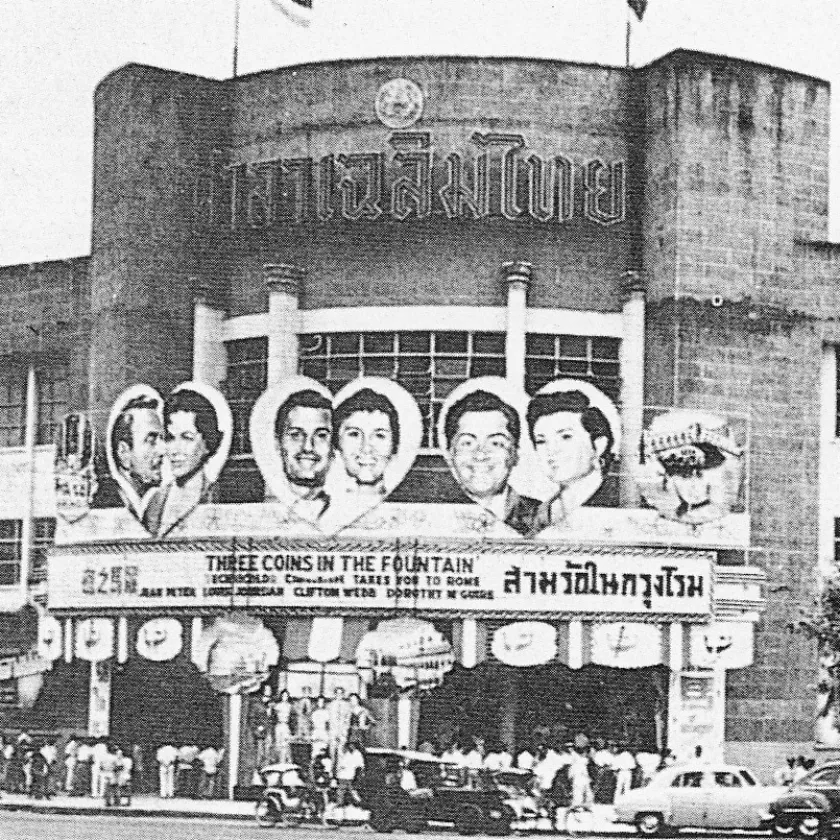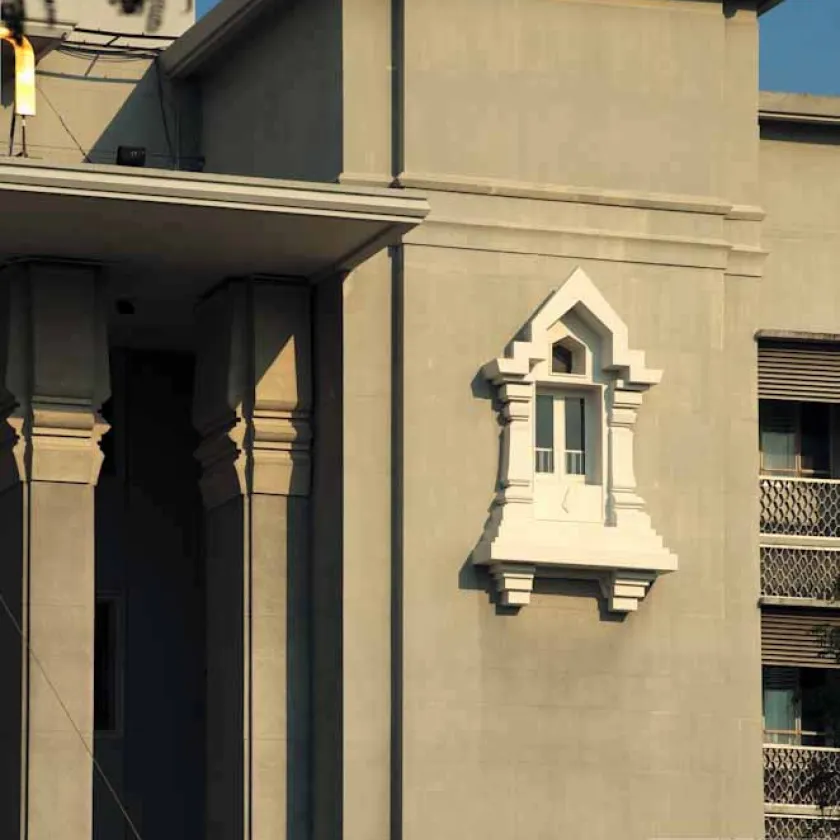Ratchadamnoen Avenue, the main thoroughfare running through the heart of old Bangkok, is not merely a principal route connecting the royal areas of the Grand Palace in Phra Nakhon district with Dusit Palace in Dusit district. Rather, it forms the most significant avenue at the center of Thailand’s political and administrative sphere, steeped in intense social and political events. One crucial witness to the stories of the avenue is the construction, demolition, and renovation of the architectural structures that have lined the streets since their inception during the reign of King Rama V until today. While some of these changes are part of urban development, the persistence, disappearance, and/or modification of important buildings, as well as the discontinuation of various activities along this road, reflect the turbulent history of Thai politics over the past century. Particularly in recent decades, the appearance of Ratchadamnoen Avenue has been transformed, with an increasing emphasis on activities that prominently highlight the monarchy, while many architectural works and events that embody the memories of the Khana Ratsadon (People's Party) and ordinary citizens have gradually and significantly disappeared. It could be said that the narrative of Ratchadamnoen Avenue serves as one of the best reflections of Thailand’s social and political history. But how can the hidden stories embedded in the avenue be brought to the attention of the public before they fade from collective memory?
In 2022, “AR Ratsadondamnoen: Rediscover the Memories Disappeared from the People's Avenue” was launched and gained attention from various media outlets. This augmented reality (AR) project offers simulated images and information on eight significant architectural structures along Ratchadamnoen Avenue, some of which have vanished, while others have been altered beyond recognition, losing their historical and architectural value. The AR Ratsadondamnoen project originated from an initiative by the Urban Ally project by the ASEAN Centre for Urban Connectivity and Creative Cities at Silpakorn University, aiming to disseminate new perspectives on urban design and development through modern, accessible formats. Urban Ally granted Kid Yang, an independent group of researchers in art, architecture, and society, the freedom to lead the development of the content, key issues, and presentation tools. Kid Yang chose Ratchadamnoen Avenue as the focus, given their potential as a knowledge base for urban design and development and their role as one of the most historically significant streets in Bangkok, evolving alongside the history of the kingdom since the era of absolute monarchy to the present democratic system. Kid Yang employed AR technology, which excels at merging real-world environments with virtual simulations, to illustrate the heritage of the Khana Ratsadon through eight selected sites, making them easier to understand to the general public. The term “Ratsadondamnoen” in the project’s name replaces the word “Ratchadamnoen” to emphasize the role of the Khana Ratsadon and the regular citizens who once gave life to these roads.
The AR experience was accessible via the Urban Ally website at https://open-data.urbanally.org/projects/ratsadondumnoen (link now defunct), featuring a map with graphic representations of the Ratchadamnoen Avenues in Bangkok and the eight architectural structures selected to represent the architectural heritage that once existed. These include the temporary structures used for Constitution Day celebrations at Dusit Palace and Sanam Luang, which disappeared along with the grand celebrations of the Constitution, the Boworadet Rebellion Suppression Crematorium (temporary structure), the Sam Thaharn (Three Soldiers) Gas Station, the Sala Chalermthai Theater, and the Chalermchart Theater.
Some architectures have been altered beyond recognition, losing their historical and architectural value. These include the Supreme Court Complex and several structures along the avenue. Additionally, the remaining buildings along the avenue are also at risk of similar transformations.
The traces of such persistences, disappearances, modifications, and related operations, are narrated through two key methods. First, through AR, which allows viewers to interact by taking photos and videos of themselves with these architectural sites using mobile phones or tablets in real-world environments. Second, through historical information, old photographs, academic references related to the architecture, and activities.
AR Ratsadondamnoen aims to serve as an accessible and enjoyable tool for everyone, transmitting the hidden memories along Ratchadamnoen Avenue while reminding us of the architectural and social developments and the ideological contestation over space through the construction and demolition along this historical avenue, a process that has continued to the present.





